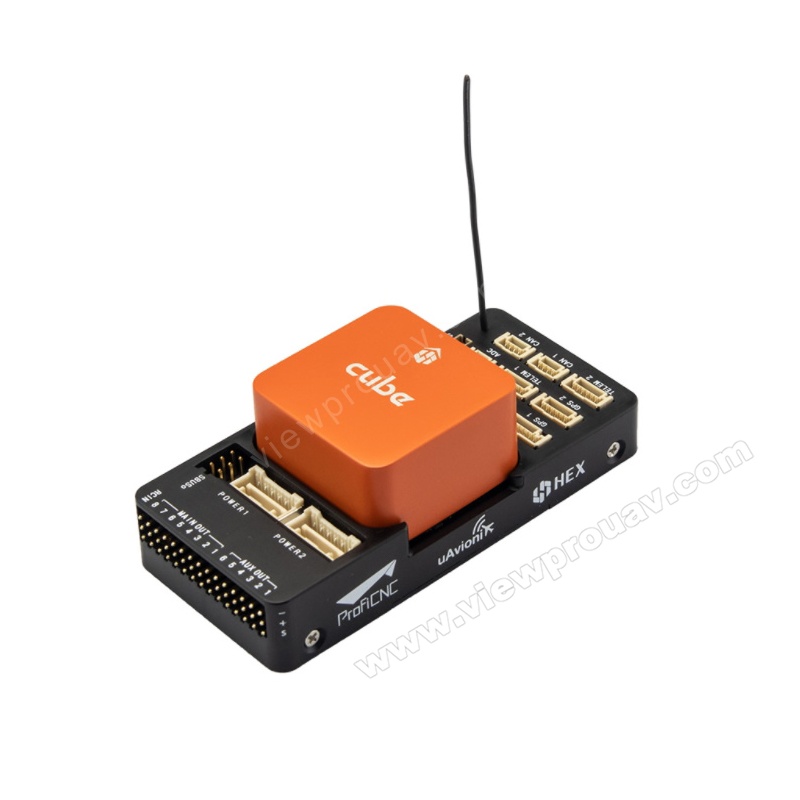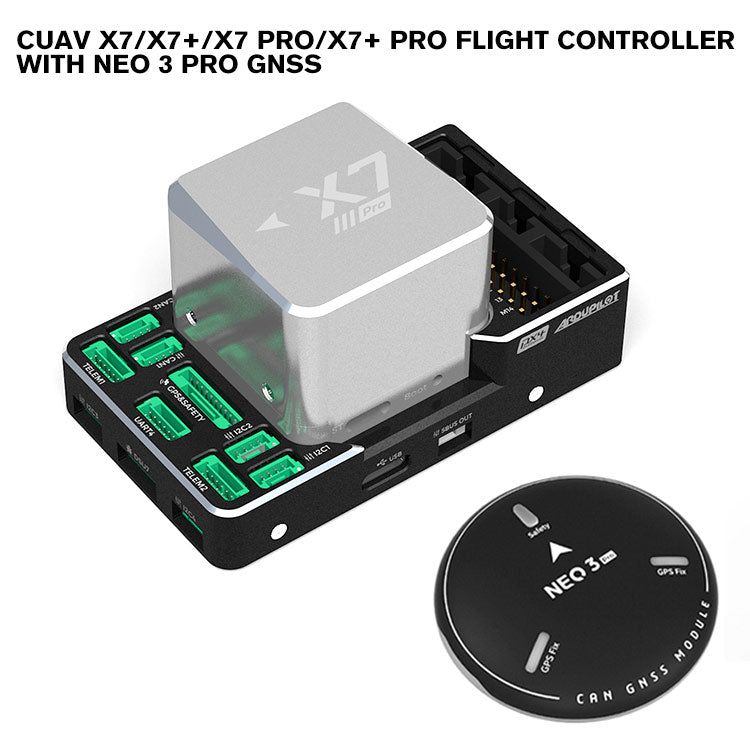Reliable Drone Navigation with SparkNavi Drone Flight Controller and GNSS/INS Made in Taiwan
Reliable Drone Navigation with SparkNavi Drone Flight Controller and GNSS/INS Made in Taiwan
Blog Article
Exploring the Role of Drone Flight Controllers in Enhancing Flight Security and Navigating Performance
The advancement of drone innovation has considerably raised the relevance of flight controllers, which function as the mind of these airborne automobiles. By incorporating real-time data from a variety of sensing units, trip controllers improve flight stability and navigation efficiency, guaranteeing that drones can operate smoothly also in complex settings. This discussion will certainly discover the crucial elements that contribute to these enhancements, as well as the effects for the future of autonomous flight. What technologies lie ahead that could additionally transform the capacities of drone trip controllers?

Comprehending Flight Controllers
Trip controllers are indispensable elements in the functioning of drones, acting as the minds that handle and support flight operations. These innovative gadgets procedure data from different sensors, including accelerometers, gyroscopes, and GPS, to make sure that the drone preserves its designated flight path. The flight controller translates this data and implements commands based on pre-defined formulas, making it possible for the drone to react to ecological modifications, such as wind or obstacles.
The primary feature of a trip controller is to preserve stability during flight. It achieves this by making real-time adjustments to the drone's electric motors and control surface areas, guaranteeing equilibrium and control. Furthermore, modern flight controllers include advanced attributes such as waypoint navigating, enabling automated flight courses and improved functional efficiency.
Understanding the style of trip controllers is important for both experts and enthusiasts. They typically contain a microcontroller, firmware, and various user interfaces for sensing unit input and interaction. As modern technology breakthroughs, flight controllers have actually become much more qualified and portable, integrating expert system to adapt and boost decision-making processes to complex flight situations. This advancement indicates a pivotal growth in the drone sector, leading the way for a lot more advanced applications and much safer operations.
Trick Elements of Trip Security
Attaining ideal flight security in drones relies on a number of key elements that work in concert to make sure controlled and smooth procedures. Central to this security is the flight controller itself, which processes information from numerous sensors to keep the wanted trip attitude. This includes accelerometers and gyroscopes that gauge motion and orientation, allowing for real-time changes to the drone's placement.
Another essential component is the digital speed controllers (ESCs), which control the power delivered to the motors. By finely tuning motor speeds in feedback to trip controller commands, ESCs help preserve balance and neutralize disturbances triggered by wind or sudden movements.
Additionally, the design of the drone's framework plays a pivotal role in flight security. A well-structured frame decreases vibrations and enhances the total aerodynamic account, adding to smoother trip characteristics. Finally, the assimilation of innovative formulas within the flight controller help in predictive adjustments, guaranteeing a responsive and adaptable flight experience.
With each other, these parts create a natural system that enhances a drone's security, permitting precise handling and improved performance in various flight conditions.
Navigation Performance Methods
Efficiency in navigation is vital for enhancing drone operations, particularly in complicated atmospheres. Effective navigation methods boost the ability of drones to pass through tough surfaces and avoid obstacles, therefore boosting functional effectiveness and safety.
One prominent technique is the implementation of sophisticated general practitioners and inertial measurement devices (IMUs) that offer specific place tracking and orientation information. These modern technologies permit drones to calculate optimal flight paths in real-time, thinking about numerous aspects such as wind conditions and potential obstacles.
Another strategy entails using formulas for course planning and optimization. Algorithms such as A * and Dijkstra's formula can be deployed to determine one of the most efficient route while minimizing energy usage and flight time. Incorporating equipment knowing versions can make it possible for drones to adaptively discover from their settings, boosting navigation abilities through experience.

Effect On Autonomous Drones
The assimilation of innovative navigation techniques has greatly transformed the capabilities of independent drones, allowing them to run with higher freedom and accuracy. SparkNavi drone flight controller and GNSS/INS made in taiwan. These improvements are mostly credited to advanced trip controllers that utilize real-time data processing and sensor combination, permitting drones to navigate complicated atmospheres effortlessly
The effect on self-governing drones extends beyond plain navigation; it incorporates boosted barrier evasion, boosted security during dynamic problems, and enhanced objective reliability. By leveraging formulas that incorporate artificial intelligence and expert system, drones can adapt to changing circumstances, making notified decisions that maximize their flight paths while minimizing dangers.
In addition, the implementation you could try here of durable flight controllers has actually promoted the implementation of complex jobs, such as airborne examinations, delivery services, and agricultural monitoring, with very little human intervention. This capability not only improves procedures yet likewise decreases human error, therefore improving overall safety and security.
Because of this, the operational range of independent drones has broadened dramatically, making them crucial devices in different industries. Their capacity to carry out effectively in diverse scenarios emphasizes the important function that progressed trip controllers play fit the future of unmanned airborne systems.
Future Patterns in Flight Control
Regularly, advancements in trip control modern technology are poised to redefine the landscape of drone procedures in the coming years. Arising trends indicate a considerable shift in the direction of enhanced expert system (AI) combination, making it possible for trip controllers to refine real-time data a lot more effectively. This advancement will promote enhanced decision-making capabilities, permitting drones to adjust to vibrant ecological conditions autonomously.
Moreover, the execution of artificial intelligence algorithms is expected to enhance anticipating maintenance, thereby reducing downtime and expanding the lifecycle of drone parts. This positive method to maintenance will certainly be important as drone applications broaden throughout various markets, from farming to logistics.

.jpg)
Finally, developments in protected communication methods will deal with safety and regulative concerns, making sure that drones can operate effortlessly in overloaded airspaces (SparkNavi drone flight controller and GNSS/INS made in taiwan). Collectively, these trends direct in the direction of a future where flight control systems are not only smarter and much more additionally capable yet effective of operating securely in an increasingly integrated airspace
Verdict
Finally, drone trip controllers are important to boosting trip stability and navigating performance through the advanced processing of sensor data. By keeping optimal trip check these guys out perspectives and utilizing advanced algorithms for path optimization and challenge evasion, these controllers dramatically add to the autonomy and operational security of drones. As innovation continues to evolve, further innovations in trip control systems are anticipated, promising improved performance and expanded capacities in the realm of unmanned aerial vehicles.
By integrating real-time information from a variety of sensors, flight controllers boost flight security and navigating effectiveness, making sure that drones can operate efficiently even in intricate atmospheres.Trip controllers are essential elements in the performance of drones, offering as the minds that support and handle trip operations. Furthermore, contemporary trip controllers incorporate advanced attributes such as waypoint navigating, enabling for automated flight courses and enhanced functional effectiveness.
Central to this security is the trip controller itself, which processes data from various sensors to maintain the wanted trip perspective.In conclusion, drone trip controllers are essential to improving trip why not look here stability and navigating effectiveness with the innovative handling of sensing unit data.
Report this page